Parliamentary constituency look-up
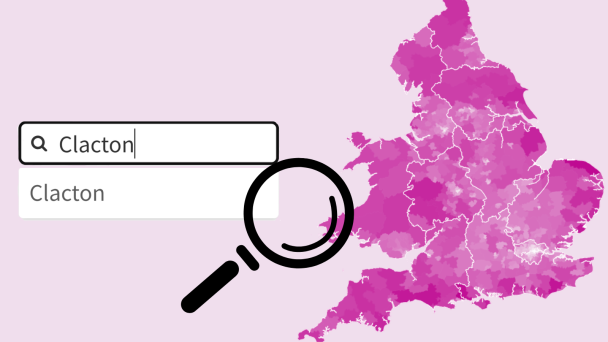
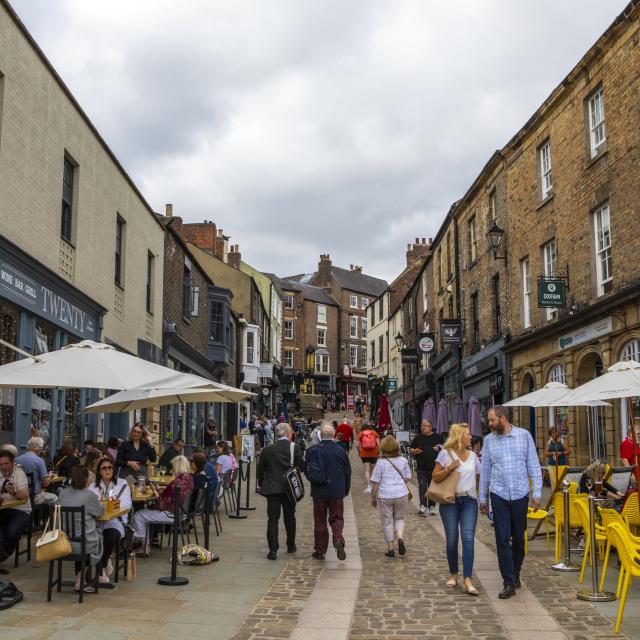
Today we launch an English and Welsh constituency look-up, with rich demographic data and our assessment of where different voter profiles are most common. It shows that the voter profile often referred to as ‘Middle England’ is at the centre of the constituencies that could swing between the Conservatives and Labour at this election.
This opinion profile dominate two in three seats that were marginal seats contested between the Conservatives and Labour in 2019. At the National Centre for Social Research (NatCen), we suggest thinking about them as Middle Britons, as this opinion segment will also be important in Scotland.
Here’s where the ‘typical’ British voter, ‘Middle Britons’, dominate, and given this group’s current lack of strong party affiliation, this is where swings will generally be more likely.
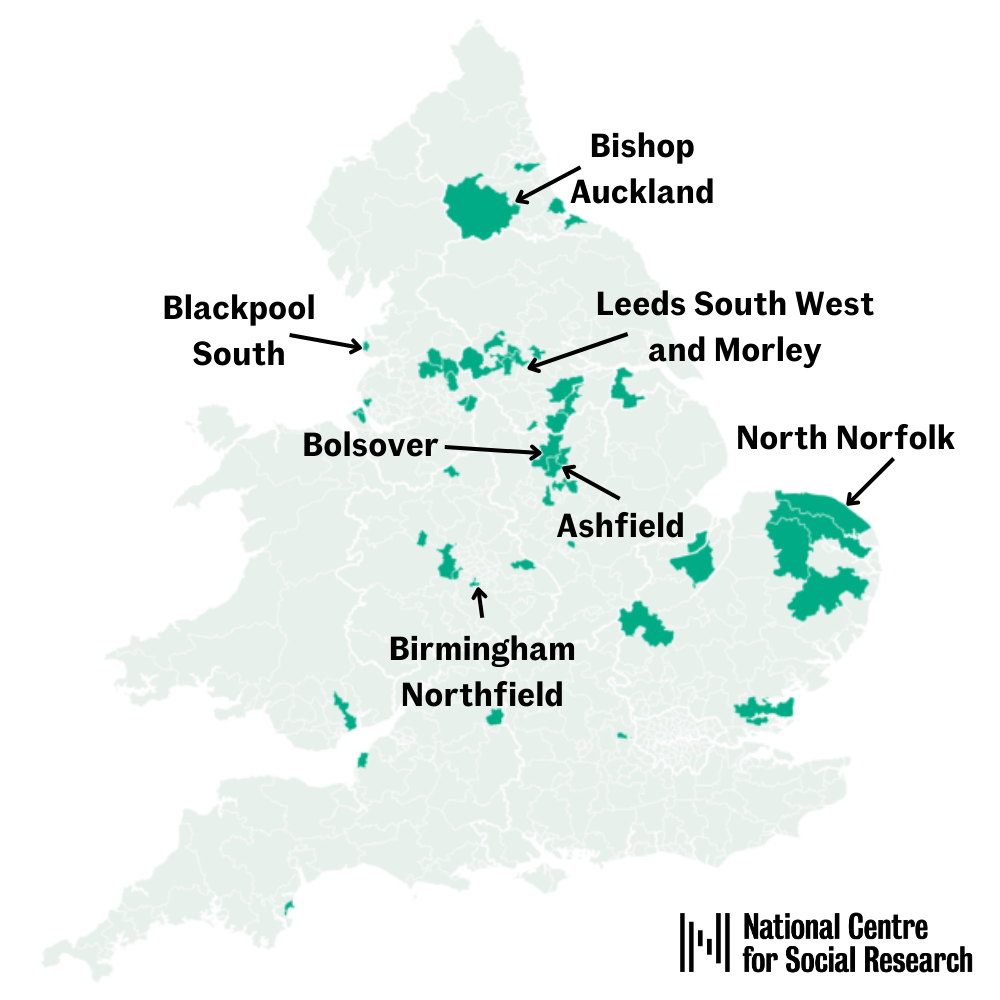
This map shows constituencies where Middle Britons are likely to be strongly overrepresented (with our model indicating that their share of the electorate is 1.2 standard deviations or more above average). Note 'Red Wall' seats including Ashfield, Bishop Auckland and Bolsover. Other seats that would have been won with a narrow margin in 2019 include Birmingham Northfield, Leeds South West and Morley, and North Norfolk. Our analysis indicate that these locations may be more prone to electoral swings, both in this election and in future.
People with a Middle Britons opinion profile express mild agreement with left-wing narratives. They are divided in their attitudes towards tax-and-spend policies, largely neutral on equal opportunities and agree on the need to be tough on crime. Crucially, this is a group that doesn’t see themselves as a supporter of any particular party.
In the 90 English and Welsh seats where Labour would have been the runner-up to the Conservatives in in 2019, with a gap of less than 20% of the votes (our thanks to Rallings & Thrasher for data on the 2019 general election result mapped to the new constituencies), about two-thirds of these have Middle Britons as the dominant voter segment, with a quarter of the vote or more.
Our British Social Attitudes survey interviews, which took place before the election campaign began, indicate that this voter segment is the second most important for most parties. The Conservatives, Labour, Reform UK, the Scottish National Party (SNP) and the Liberal Democrats all had Middle Britons as their second most important supporter base, making up between 22% and 28% of each party’s estimated support at the time. The Greens instead have this group as their third most important segment. There was not enough data for Plaid Cymru to make an assessment.
Here is our full assessment of voting intentions by opinion segment:
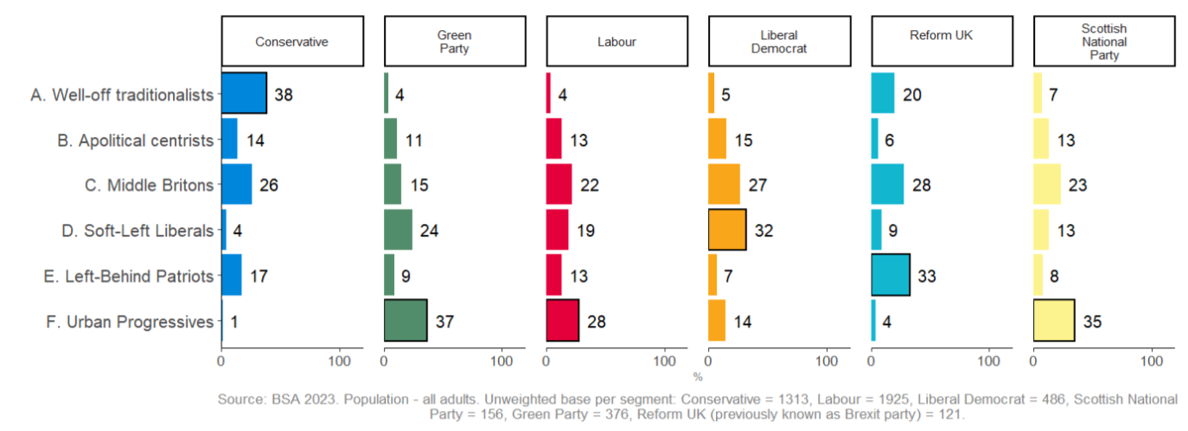
The full list of constituencies where Middle Britons are likely to be highly overrepresented in England and Wales is Ashfield, Ashton-under-Lyne, Birkenhead, Birmingham Northfield, Bishop Auckland, Blackpool South, Bolsover, Bootle, Bradford South, Broadland and Fakenham, Calder Valley, Doncaster Central, Doncaster North, Erewash, Gedling, Hartlepool, Heywood and Middleton North, Hyndburn, Kingswinford and South Staffordshire, Leeds East, Leeds South West and Morley, Leeds West and Pudsey, Leicester East, Maldon, Mansfield, Mid Norfolk, Newport West and Islwyn, North Bedfordshire, North East Cambridgeshire, North Norfolk, Nottingham North and Kimberley, Nuneaton, Rayleigh and Wickford, Redcar, Rossendale and Darwen, Rother Valley, Scunthorpe, Sheffield Heeley, Shipley, Slough, Spen Valley, Stalybridge and Hyde, Stoke-on-Trent North, Stourbridge, Swindon North, Telford, Torbay, Wallasey, Washington and Gateshead South, Waveney Valley and Weston-super-Mare.



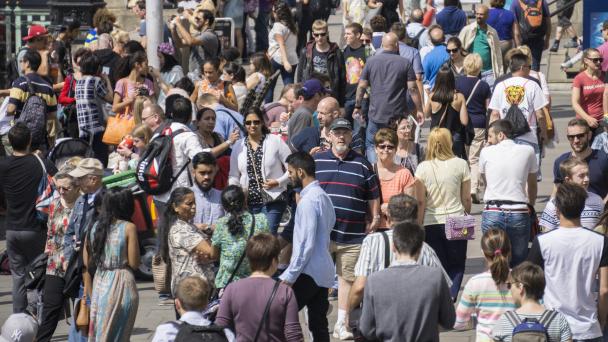
Receive a regular update, sent directly to your inbox, with a summary of our current events, research, blogs and comment.
Subscribe